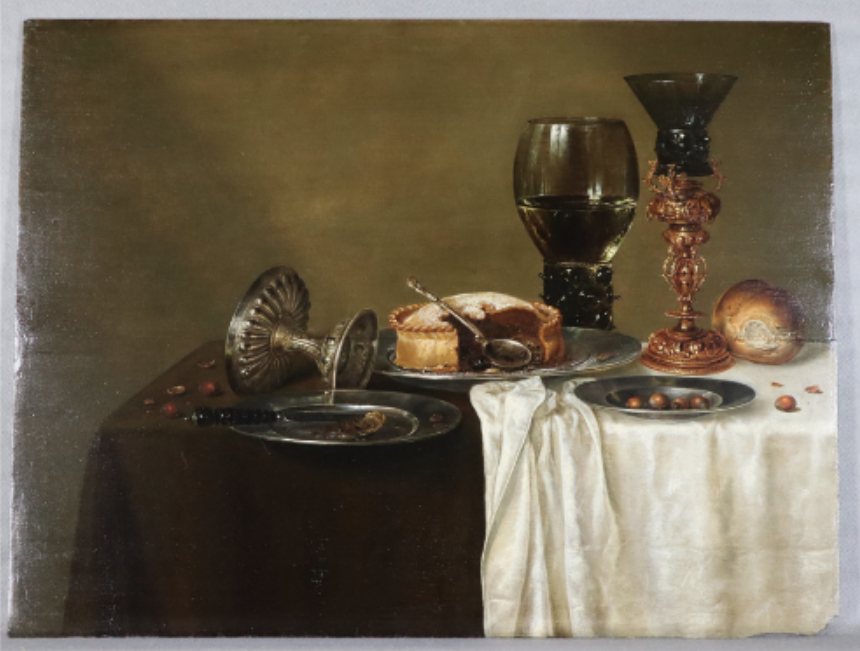
For generations, an unassuming still life gathered dust on the walls of an old private school in the Blue Mountains of Australia. Now, researchers have learned that it was likely made by an old Dutch master, if not two—and it may be worth millions.
The artwork, painted atop two panels of oak hardboard, depicts a lush tabletop feast with a half-eaten pie and an overturned goblet. It lived for nearly 150 years at the Woodford Academy, a 20th-century school in New South Wales now owned by the National Trust of Australia.
The painting, known to be old but not necessarily a masterpiece, was one of 36 Trust-owned artworks recently sent to conservators for cleaning. Upon removing the centuries-old varnish, restorers discovered a diminutive signature on a knife. It belonged to 17th-century Dutch painter Gerrit Willemsz Heda.
What’s more, experts believe that the picture may have been a collaboration between the artist and his more famous father, Willem Claesz Heda, whose own paintings have sold for as much as $8.2 million at auction. (It’s not hard to see the similarities: Several objects from the Woodford still life have seemingly appeared in other paintings by the elder artist, including Still Life With Fruit Pie and Various Objects from 1634.)
“We believed the artwork might be an authentic 17th-century painting, but finding the artist’s signature felt like a one in a million chance,” Rebecca Pinchin, collections manager for the National Trust, said in a statement. ”This is a remarkable story of discovery, which has taken us on a journey across a number of years, piecing together and validating the work through expert advice and technology.”
The painting was valued at $200,000 prior to the unearthing of the signature. Now it’s undergoing a reevaluation that may significantly up that price tag. The Guardian estimated its new value at as much as $5 million.
Conservators estimate that the painting, simply called Still Life, was created in 1640, when the younger Heda was still a teenager. “He was so young and so gifted,” Pinchin said. “Even if this artwork was painted as a father-son collaboration, the level of Gerrit’s skill in this painting is incredible.”
The collections manager also pointed out a theme prominent across both artists’ work. “An interesting characteristic of Heda still lifes,” she explained, “is that there is always a plate half off the table. It’s symbolic of the transient nature of life—one minute you have comfort and pleasure, the next you can fall into bad times.”
While the trust is looking into how the Dutch painting may have ended up in Australia, one early theory suggests it was acquired in the 1870s by Alfred Fairfax, nephew of Sydney Morning Herald founder James Fairfax, who brought it to the continent. Fairfax had purchased the Woodford property just a few years prior, using the building as a gentlemen’s retreat.
In 1907, the site became a private school; the headmaster’s daughters continued to live there after its closing in 1936. The building, and many objects long stored inside, including the painting, were bequeathed to the National Trust in 1979.
From a conservator’s perspective, the situation was far from ideal. ”Rooms were stacked with artworks, furniture and papers suffering from damp and insect infestation,” Pinchin explained. “It took some time for the contents to be sorted and identified.”
As it turns out, good things come to those who wait.